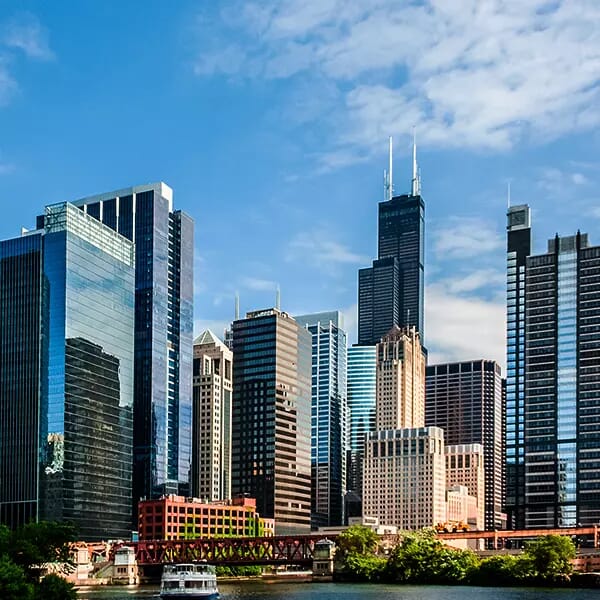 Credit: Gábor Molnár / Unsplash
Credit: Gábor Molnár / UnsplashGlobal Green Building Finance Landscape – Are We Ready?
Global Scenario:
The demand for green financial products has been soaring in recent past as more and more financial institutions align towards climate action. The green bonds market has shown a dramatic increase in the last few years. It currently stands at USD 1.4 Trillion, a significant part of that being in the building sector. Year 2021 values are expected to grow by 80% over the previous year’s issuances and the total value is expected to cross USD 2 trillion by end of 2021. Currently, there is much demand in the primary markets and the offerings for Green Bonds usually get oversubscribed, up to even four times.
The secondary market for these bonds is robust too with a strong demand. As a result, green bonds not only tend to get priced more attractively, but they also have lower volatility in yield compared to similar non-green bonds.
In developed markets, occasionally there might be a price benefit in going for green finance. However, that is not the only reason companies go for it. Market reputation is also a big driver for many.
Globally, leading Financial Institutions are making larger commitments towards green investments. Ivanhoe Cambridge, a large pension fund manager, is one such organization and has a strong ESG compliance mechanism. While there is no separate allocation for green investments, the entire pool of capital is mandated to be ESG compliant. Currently 64% of their building portfolio is green certified and all upcoming investments will be aligned to projects meeting green requirements. Ivanhoe Cambridge aims for their entire building portfolio to be zero-carbon by the year 2040.
The market forces strive for getting good returns, while reducing risks, including climate-related risks. Financial institutions need a reliable and effective standard for ensuring compliance with their green criteria. Experts agreed that IFC’s EDGE green building certification offers a great way to ensure that their investment is going in a green project and the certification is done in a time and cost-effective manner.
Green Finance & Housing:
Approximately 1.6 billion people globally are living in sub-standard conditions and are in need of proper homes. The world is facing two crises simultaneously – climate and housing. Several companies globally are now focusing on addressing both these challenges together by investing in green affordable housing in emerging markets.
Globally the green affordable housing market is estimated to have a USD 17 trillion potential. In India, values of green affordable homes range from USD 7,000 to USD30,000 and several local and international developers and investors are active in this space.
As an investor in climate smart affordable homes, supporting projects across Africa and Asia, UK’s Reall invests in projects that are sustainably viable and are EDGE Certified. In India, they have projects in Gujarat and are in process of exploring Maharashtra and Telangana markets.
Green Shoots of Green Finance in India:
GMR Group, which has developed the Delhi and the Hyderabad airports, is formulating a “smart & sustainable city” concept for the airports and aims to make then Zero-Carbon by the year 2030. In March 2021, the company issued a green bond for the Delhi airport and the same was oversubscribed 4 times, despite volatile market conditions. Buoyed by its success, the company is envisaging more such issuances for their expansion/ new projects aligned with green building standards.
The office sector has seen the maximum demand for green spaces for a long time now and the same has increased even more in the last six months. More and more space occupiers are demanding green clauses and green leases now. Developers such as DLF are responding to such client demands. DLF’s recent Chennai project runs on 50% renewable power.
Large financial institutions like HDFC Capital are leading the way in ESG compliance. They aim to channelize some funds to technology-led green affordable housing too. IFC’s recent investments of USD 250 Million with HDFC in green affordable homes is significant step towards evolution of green finance in the country, especially for green mortgages. Another new initiative is Green-Deposits focused on deposits from “high net-worth individuals” and family offices to be used for financing sustainable housing credit solutions.
Challenges & Opportunities:
A key challenge is to overcome the misperception that the cost of building a green building is high compared to that of a conventional building. Several experts agree that the incremental cost of building green typically ranges from 1% to 3%. Many developers have managed to even bring it down to zero through some extra focus on passive solar techniques.
Another issue is related to customer awareness. Developers will be forced to build green housing when customers are aware and demand it. The challenge is that of awareness and even of intent. Not many customers today are willing to pay a bit extra today for significant savings in utility costs later. Increasing awareness through customer campaigns will help alleviate this problem.
In India, governance component of ESG has the most weightage and pricing benefit and not so much for the other two components. Some experts pointed out the significant impact that policy measures can have on the overall direction for green buildings and green finance. Potential policy incentives for promoting green development might include some tax benefit to green certified projects, similar to those for the EV (electric vehicles). Such measure can have sweeping effects in the right direction.
This is a summary of key takeaways from the GRI Club e-meeting discussion titled “Global Green Building Finance Landscape – Are We Ready?, article penned by our discussion moderator Sandeep Singh, Senior Consultant, IFC. The panel of co-chairs included Chanakya Chakravarti, Managing Director - India, Ivanhoe Cambridge; Mark Atterton, Commercial Director, Reall; Sumit Anand, Chief Business Officer, GMR Group; Sean Kidney, CEO, Climate Bonds Initiative; Vipul Roongta, Managing Director & CEO, HDFC Capital.



